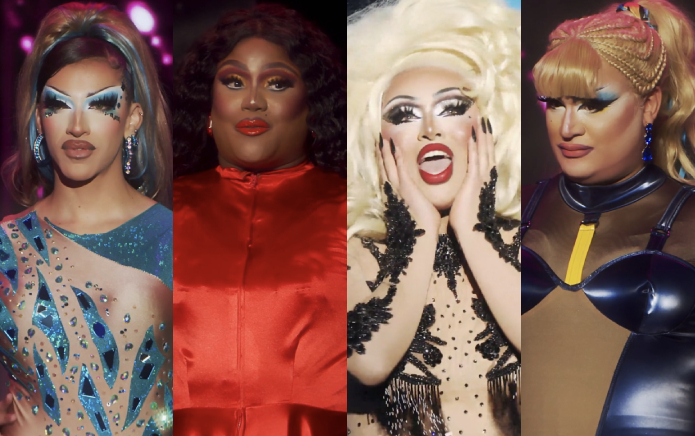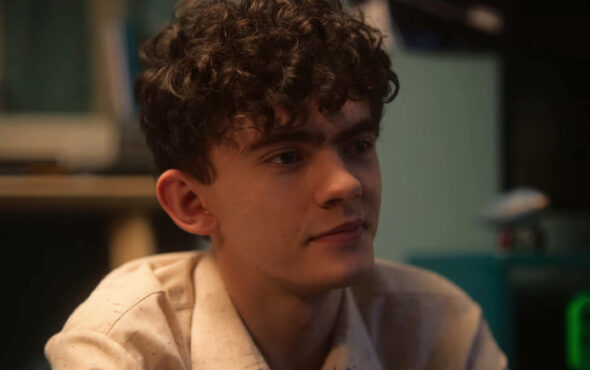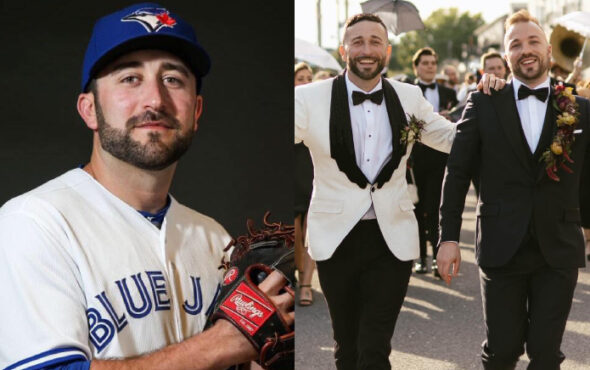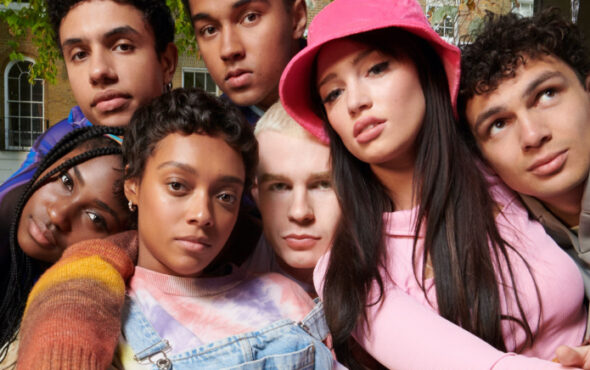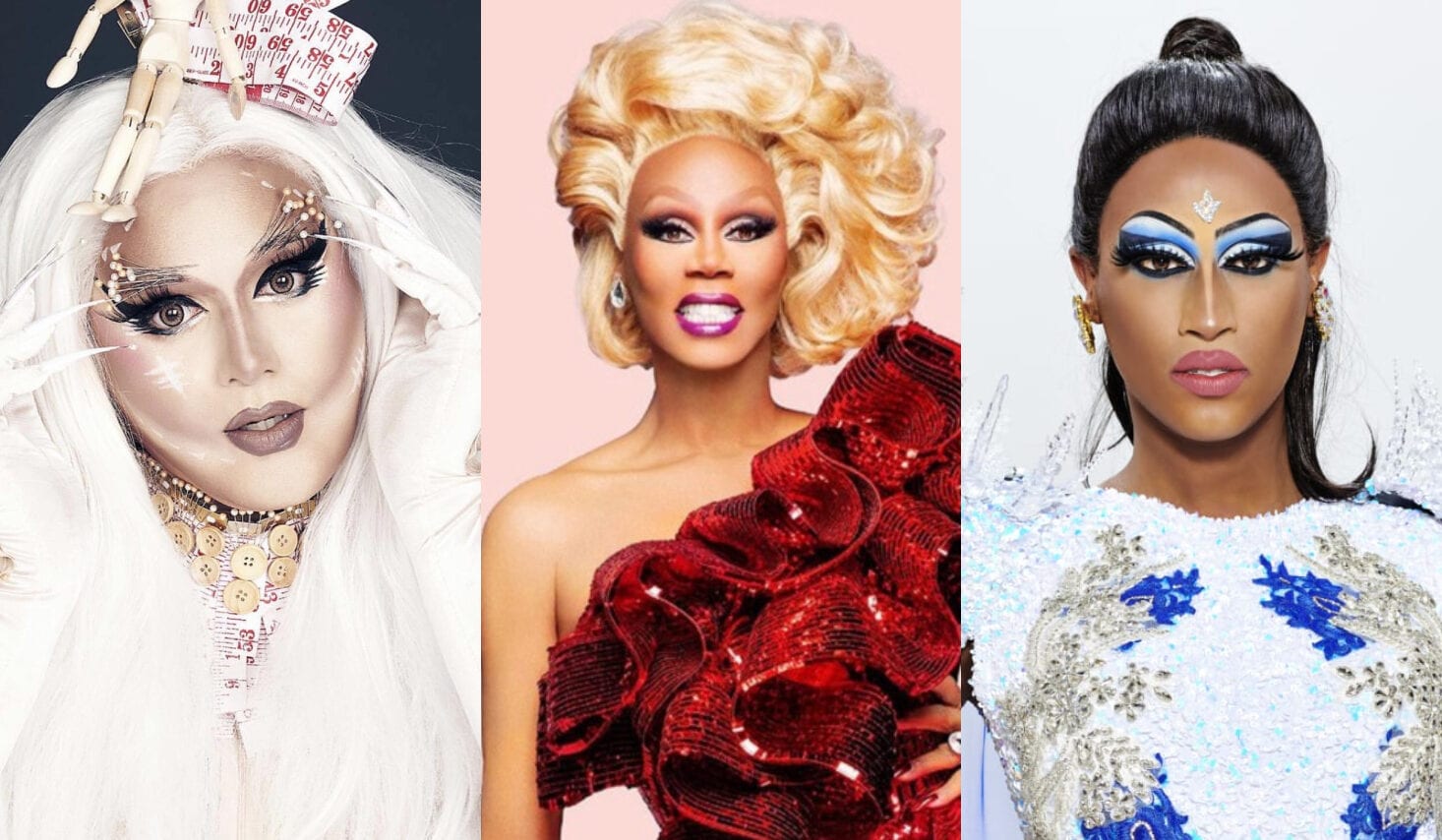
Let’s talk about the incredible South Asian drag queens and kings on the UK scene because frankly, we need to. There’s absolutely no denying that Drag Race has been an unparalleled platform for the positive mainstreaming of drag culture, and hence for drag artists across the globe, and has been instrumental in bringing this aspect of queer culture into the mainstream on our terms, rather than through appropriation.
We loved watching Sum Ting Wong – and let’s face it, their ‘hiding in plain sight’ – as a Drag Race UK queen in season 1, whilst simultaneously being in the closet to their family, which is highly relatable content for us Asians.
In 2019, on the second season of the Thai version of the show, we saw the first South Asian queen take part after 11 years of Drag Race, which is nothing short of shocking. Genie – who became the first North American queen to compete in Drag Race Thailand, the first Hindu queen, and the first queen of Indian descent (so many firsts!) to compete on Drag Race – was some long overdue representation for South Asian drag performers. A year later, we saw Indo-Guyanese Canadian queen Priyanka win Canada’s Drag Race. South Asian drag is some of the most beautifully decorated and culturally diverse drag in existence, and the fact that the world has only seen snippets of that through Genie and Priyanka during their respective appearances is a huge shame.
There has also been plenty of discourse over the years surrounding the gender inclusivity and trans erasure of the show, with one of the main phrases being ‘Gentleman, start your engines and may the best woman win’. In Season 13 we have the first trans man competing in the competition with Gottmik, while two non-binary contestants competed on season two of the UK show. It meant this phrase was changed to ‘Racers, start your engines and may the best drag queen win,’ so there has definitely been some progress in terms of inclusivity.
Many of us would love to see more conversations and platforming around drag kings in the franchise. Drag has a beautiful history, one that has served our community for centuries, but it cannot go unnoticed that much of drag’s history is shrouded in misogyny, which in modern day displays itself as the disparity in popularity between queens and kings. A man performing as a woman can be more celebrated than other forms of drag. There are even times on the show where the queens are chastised for not ‘creating the female illusion’ as if the only acceptable form of drag is ‘becoming a woman’. In reality, drag is diverse and creative, it’s wacky, wonderful and weird. It is so much more than just a man performing as a woman.
RuPaul’s Drag Race has proven to us all that drag culture is mainstream, but now it’s time for us to include all of the beautifully creative and culturally diverse parts of drag in that – including drag kings.
For the avoidance of doubt, here are some incredible South Asian kings and queens in the UK that we should all be celebrating. I asked them what drag means to them and what their feelings are about representation.
Asifa Lahore
View this post on Instagram
Our very own former GAY TIMES Magazine cover star and probably the UK’s best known South Asian drag queen, Asifa burst into our lives as a force to be reckoned with as ‘Britain’s First Out Muslim Drag Queen’. More recently having come out as trans, she would be a strong contender as an experienced and not just hugely representative, but also much-adored Drag Race UK queen if given the opportunity.
In fact, Asifa led a campaign in 2020 to call for more South Asian representation and showcased a bunch of stunning talent from around the world. I asked Asifa why she thinks we’re not getting cut through and what more we can do:
“I do think it’s quite blasphemous that despite being the biggest ethnic minority group in the UK, there is yet no representation on Drag Race UK,” Asifa told me. “The reasons for this are firstly who is casting, the criteria given and whether they would even think to look for a South Asian drag artist in the first place. Even with the show’s history, across the franchise including in the USA, we find huge under-representation. We could say the same for Canada as even though Priyanka won, we don’t see in any way a representative number of acts overall.
“Secondly, many if not most of the drag queens from the South Asian community aren’t out and so we need to consider whether queens in the South Asian diaspora are auditioning. Perhaps they don’t feel they can or it’s for them, which of course may be because they don’t see themselves represented already. I would urge South Asian drag artists to go out there and represent, no matter where they are on their journey. The UK is known for its plethora of Bollywood and Bhangra LGBTQ+ nightclubs and we are the largest collection of South Asian drag queens in the world, so let’s represent!”
Asifa adds: “Drag to me is very much about full blown self-expression and allowing each of your identities. I think as British South Asian people living in the UK, we are quite multi-faceted in our identities and how we see the world. We kind of take the best of all our cultures and put them together. So for me, drag is about full blown self-expression without any barriers in order to perform, entertain and change the world.”
Lucky Roy Singh
View this post on Instagram
Lucky has an incredible story and is known for their book Take a Walk in my Big Indian Heels: Mr Singh’s Diary. Lucky was a drag performer when they met their partner and upon getting married to him, Lucky was forced to live as a woman by their in-laws. They have talked extensively about the challenges they faced because of this experience and has spotlighted the misogyny they experienced too – something we need to talk about much more in both South Asian and LGBTQ+ culture. As well as the depth of this experience, they’re a brilliant and vibrant personality and performer.
“Drag is a not a gender, it’s an art form – an expression of my feminine artistic self,” Lucky says. “Drag is so important as it wakes people up to acknowledge so many things from abuse to political liberation. South Asian drag is so needed now more than ever as the erasure of Brown people in general and QPOC is on the rise.
“To me, Indian drag is a showcase of my heritage, my love, my art and a statement to acknowledge my art, fashion and Indian makeup. It should be included on a wider spectrum and in more queer spaces to show other young femme/queer/LGBTQ+ kids they matter and have representation.”
Bolly-Illusion
View this post on Instagram
Anthony is best known for their Bollywood dance performances and performance night Bolly-Ilusions.
“Drag means I can be my true authentic self in whatever form I want to be, with a beard – without a beard,” Bolly-Illusion says. “I can express my feminine energy freely on stage, and performing on stages helps with releasing this feminine energy that lives and grows within me.
“And the scene being representative? Well honey, let me tell you that I feel I am a token Brown South Asian queer artist on these line ups full of white queens, and I’m tired of it. I want to see people that look like me and I want to hear Indian/Bollywood music. I love that I am representing South Asian drag, but at the same time I’m in Britain and I can’t be the only South Asian queen who is representing! I want to find more fab POC queer artists who can headline shows. It’s about seeing the change we want to be, and seeing more POC artists slaying. But I’m also super grateful for venues like The Glory and Dalston Superstore in East London who showcase POC queer talent and see us as family.”
Hardik Mistry
View this post on Instagram
Prinx brings the desi boy charm and humour we have come to associate with our Bollywood heroes and delivers, in their words, ‘Big Desi Energy’. They describe their work as “a heady blend of Eastern mysticism meets Western cynicism.”
“Drag is a way for me to explore how my queerness, gender identity and South Asian heritage sit side-by-side,” Prinx says. “I’m a third culture kid so, despite being brought up ‘British’, I always feel like an outsider. The same is true for queer culture, where as a Brown, gender non-conforming person I so often feel invisible in a space that is supposed to be open and welcoming.
“A couple of years ago, I reached a point where I was fed up of other people defining me; too queer for Brown spaces and too Brown for queer spaces. My drag persona allows me to project a version of myself that other people don’t seem to see in daily life, and to simply and unapologetically take up space. Drag also gives me a platform to explore what it means to be a queer British Asian and celebrate my heritage. Meeting queer Asians on the drag scene is helping me find the queer spaces I’m looking for, but I haven’t yet found other Desi drag kings. Hopefully that will change, so if you’re out there, hit me up!”
